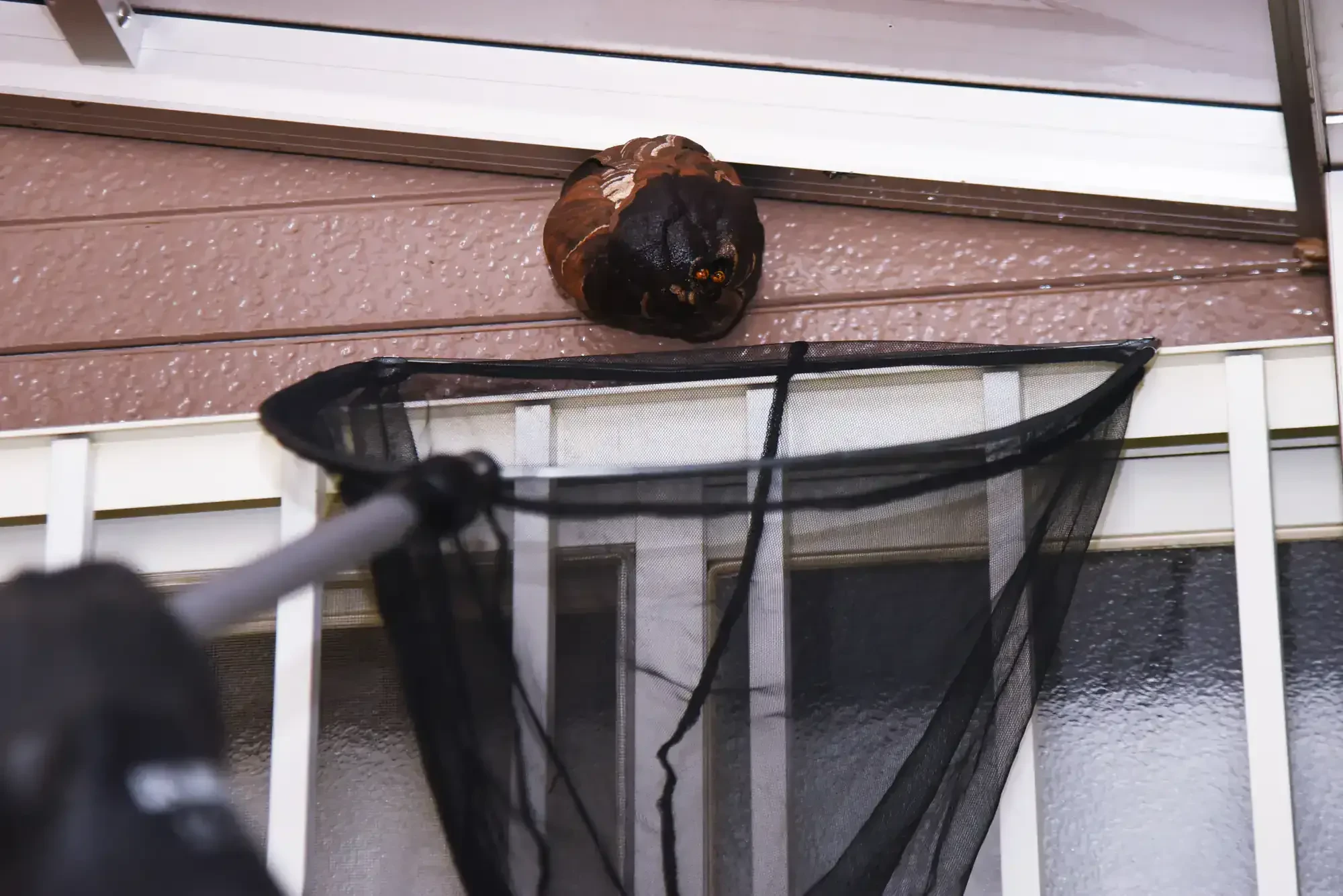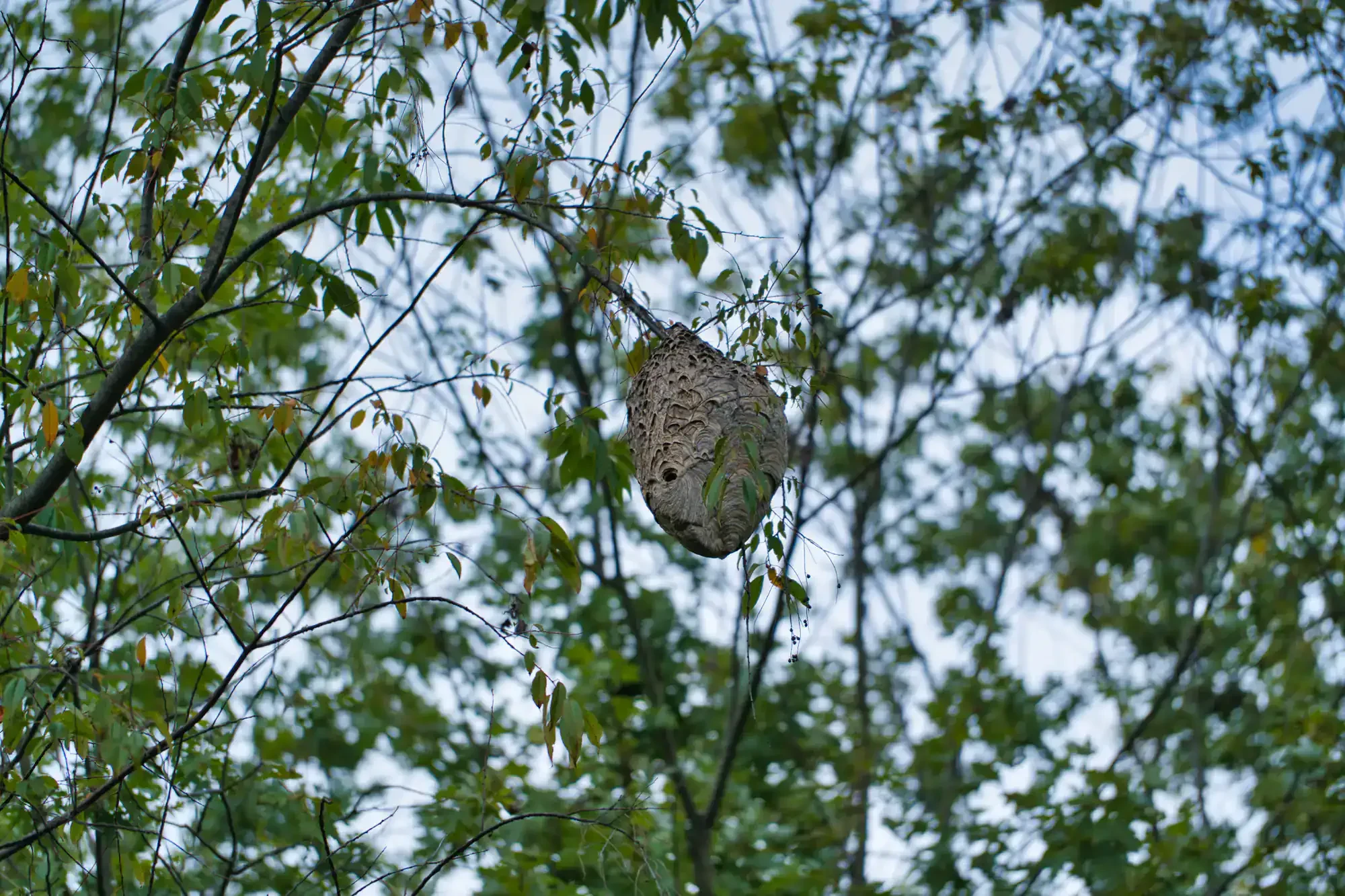
Hear from Our Customers

You’ll walk outside without scanning for yellow jackets first. Your kids can play in the yard without you holding your breath. Cookouts won’t get cut short by aggressive wasps diving for your food.
That’s what happens when you get real yellow jacket control in Corunna, MI. No more tiptoeing around your own property. No more wondering if today’s the day someone gets stung multiple times.
We eliminate the entire colony – not just the ones you can see. Because partial solutions don’t work with yellow jackets, and you shouldn’t have to live with the stress of knowing they’re still out there.
Roger has been dealing with yellow jacket infestations across Michigan for over two decades. He knows exactly where these wasps hide in Corunna – from ground nests in your lawn to wall voids in older homes.
First Choice Pest Control has been family-owned since 2005. We’re not some national chain that rotates technicians. You get the same experienced professional every time, someone who remembers your property and knows what works.
We’ve earned awards from Angie’s List and Home Advisor because we do the job right the first time. That means proper protective equipment, professional-grade treatments, and the experience to handle even the most aggressive colonies safely.

First, we locate the nest – whether it’s underground, in your wall void, or tucked under your deck. Yellow jackets in Corunna often build in old rodent burrows or gaps around your home’s foundation.
Then we treat the entire colony with professional-grade products that reach every wasp, including the queen. This isn’t a spray-and-pray approach. We use the right treatment method based on nest location and colony size.
Finally, we remove the nest completely and treat surrounding areas to prevent new colonies from moving in. Most treatments can be done during daylight hours, so you don’t have to wait until nightfall to reclaim your property.
The whole process typically takes less than an hour, but the results last all season. We guarantee our work because we know how to eliminate yellow jacket colonies completely.

Ready to get started?
You get a complete inspection to identify all nest locations on your property. Yellow jackets often have multiple entry points to the same colony, and missing even one means they’ll rebuild.
Our treatment covers ground nests, wall voids, and aerial nests up to 25 feet high. We come equipped with extension poles and protective gear to safely reach nests in eaves, soffits, and tree branches.
In Corunna, we see a lot of German yellow jackets that nest inside wall voids and Eastern yellow jackets that prefer ground locations. Each species requires a different approach, and we adjust our treatment method accordingly.
Every service includes a guarantee. If yellow jacket activity returns to the treated area, we come back at no additional charge. We also provide prevention tips specific to your property to help avoid future infestations.

Yellow jackets are significantly more dangerous than most other stinging insects because they can sting multiple times without losing their stinger. Unlike honeybees that die after one sting, yellow jackets will attack repeatedly if they feel threatened.
Each sting injects venom that causes immediate pain, swelling, and redness. For people with allergies, multiple stings can trigger severe reactions including difficulty breathing, hives, and even anaphylactic shock. Yellow jackets also release alarm pheromones when they sting, which signals other wasps to join the attack.
In Michigan, yellow jackets cause more emergency room visits than any other stinging insect. Their aggressive nature and ability to sting repeatedly make professional removal essential, especially when colonies are located near high-traffic areas of your property.
The best time for yellow jacket nest removal in Michigan is as soon as you notice activity, but late summer and early fall require immediate attention. Colonies reach their peak size in August and September, with some containing thousands of wasps.
During this period, yellow jackets become more aggressive as they switch from hunting insects to scavenging for sugary foods. This brings them into closer contact with people during outdoor activities, increasing the risk of stings. Waiting until fall also means dealing with new queens that will overwinter and start new colonies next spring.
Early morning or late evening treatments are often most effective because more wasps are in the nest. However, with professional equipment and protective gear, we can safely remove nests during daylight hours when it’s more convenient for homeowners.
Over-the-counter yellow jacket sprays typically only kill the wasps you can see, not the entire colony hidden inside the nest. This partial treatment enrages the surviving wasps and makes them more aggressive toward anyone who approaches the area.
Many homeowners also make the mistake of sealing nest entrances after spraying, which forces yellow jackets to find alternate routes into your home. Wall-nesting species will chew through drywall to escape, creating interior infestations that are much more dangerous and expensive to resolve.
Professional treatments use specialized products that penetrate the entire nest structure and eliminate the queen along with worker wasps. We also have the protective equipment necessary to apply treatments safely, even when dealing with highly aggressive colonies that have been previously disturbed by DIY attempts.
The most obvious sign of yellow jackets nesting in your walls is buzzing sounds coming from inside the structure, especially during daytime hours when workers are active. You might also notice wasps entering and exiting small gaps around windows, siding, or roof lines.
German yellow jackets, common in Michigan, prefer wall voids and attic spaces where they can build large colonies undetected. If you see yellow jackets consistently entering the same small opening on your home’s exterior, there’s likely a nest inside that void space.
Indoor sightings of individual wasps, especially during cooler weather, often indicate a wall nest. As colonies grow, some wasps may find their way into living spaces through electrical outlets, light fixtures, or gaps in walls. This situation requires immediate professional attention because the colony will continue growing and may eventually break through interior walls.
Yellow jackets are attracted to properties that offer food sources and suitable nesting sites. In Corunna, they’re drawn to garbage cans, compost bins, pet food left outside, and sugary drinks or food from outdoor dining. Late summer barbecues and pool parties are particularly attractive to scavenging yellow jackets.
For nesting, they prefer protected areas like abandoned rodent burrows, spaces under decks and porches, wall voids, and gaps in foundation or siding. Properties with gardens, fruit trees, or areas where grubs and other insects are present also attract yellow jackets because these provide food for developing larvae.
Moisture sources like leaky outdoor faucets, bird baths, or areas with poor drainage can also draw yellow jackets. They need water for nest construction and colony maintenance. Reducing these attractants through proper sanitation, sealing entry points, and eliminating moisture problems helps prevent new infestations.
Professional yellow jacket treatments typically show immediate results, with most wasps eliminated within 24-48 hours of application. However, you might continue seeing some activity for 2-3 days as wasps returning from foraging trips contact the treated nest area.
The timeline depends on colony size and nest location. Ground nests often show faster results because the treatment reaches the entire colony more quickly. Wall nests may take slightly longer as the product needs time to penetrate the entire nest structure and reach wasps in deeper chambers.
Complete elimination usually occurs within one week of treatment. If you continue seeing significant yellow jacket activity after this period, it likely indicates multiple colonies on your property or incomplete treatment of the original nest. This is why we guarantee our work – if activity persists, we return to locate and treat any remaining nests at no additional charge.